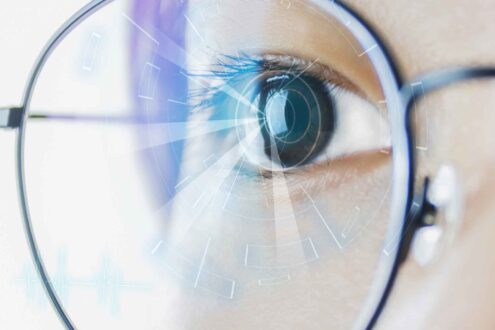Eyes complete intricate tasks by capturing every detail of the things which we are watching and then they send these details immediately and independently to our brain. But to do these intricate tasks, your eyes must work properly. When your eyes stop working correctly, the vision becomes double and blur, which means binocular vision disorder has been developed into your eyes.
Binocular vision disorder is the most common type of eye disorder in which eyes are not able to align accurately. This disorder is developed in such an individual who is continuously trying to re-align the eye muscles to remove blurriness and double-vision.
The eye disease named Vertical Heterophoria is one of the common binocular vision disorders that can lead to permanent misalignment of eyes. This disorder is developed in such an individual who is continuously overusing eye muscles to create a sharp and clear image.
All the relevant information regarding this disorder is mentioned in this article. So, to get yourself familiar with this disorder, you are requested to proceed reading further.
What is Vertical Heterophoria?
Vertical Heterophoria is a type of Binocular vision disorder, which is caused due to the misalignment of eye muscles in the vertical plane. This misalignment causes stress and strain on your eye muscles. When these eye muscles strain so much, they start to quiver, and that shaking sensation causes people to feel lightheaded, dizzy, and balanced. When these eye muscles try hard to get these images back together, then this causes headaches. Eyes are designed to work simultaneously together, but after this disorder, you will observe a slight difference in the vision of your eyes. Due to this difference, your eyes will be unable to create a clear and focused image.
Vertical Heterophoria Symptoms
The common symptoms of Vertical Heterophoria include dizziness and headaches. These headaches and dizziness are experienced when:
- You quickly or immediately stand from your seated position.
- You quickly straighten yourself after bending.
- You rapidly move your head from one side to the other side.
- Your car or other vehicle is taking round turns.
- You are in a car driving at high speed.
Besides these triggers, you can also experience neck and back pain, nausea, anxiety, car sickness, and vestibular system issues.
Vertical Heterophoria Causes
The most common cause of vertical Heterophoria is post-concussion, stroke, neurological disorder, or other traumatic brain injuries. The eyes get conflicting signals from the brain, but after any traumatic brain injury, the eyes rotate out the correct position into a faulty position that leads to Vertical Heterophoria. Besides that, also this disease is usually present in a person by birth and can run in families.
Vertical Heterophoria Test
This type of binocular vision disorder is detected by a test that is performed to fit your eyes with the proper pair of eyeglasses or contact lenses. The Neuro visual exam is used to test this eye disorder, which involves a few hours procedure that makes use of state-of-the-art equipment to measure small misalignments present in your eyes.
Vertical Heterophoria Exercise
There are no such specific exercises related to this disorder, but to enhance your overall eyesight and, to reduce the effect of binocular vision disorder, you can do these eye exercises mentioned below:
- Pencil push-up therapy:
The aim of this exercise is to correct or reduce binocular vision disorder. This therapy starts by holding a pencil at your arm’s length. After that, you have to bring that pencil close to your nose, keeping a clear focus. Keep doing this until that pencil starts to appear as a double image.
- Prism or lens fixation:
This therapy involves different lenses or prisms of many powers and you have to look into these lenses and prisms to view an object.
- Vision rest:
This technique is especially for those individuals who work on a computer for a long time. They should follow this 20/20/20 rule, which says that rest your eyes for 20 seconds after the use of the computer for 20 minutes while staring at any object that is 20 feet away from you.
- Computer programs:
This therapy involves different activities like stressing movement of eyes. This technique follows the principles of conventional vision therapy.
Vertical Heterophoria and Treatment
The treatment present to correct this disorder involves a unique pair of prism glasses, prism contact lenses, or multifocal contact lenses that allow the eyes to rotate into the position with which they are comfortable. This treatment relieves the stress and strain on the muscles of the eye. After wearing such a unique pair of glasses, headaches and dizziness is eliminated.
 Health & Care Information
Health & Care Information 


